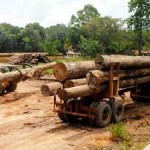“Our study suggests that as regional warming continues, drought-related plant stress associated with higher vapor pressure deficits will intensify and spread from late spring through summer to earlier and later parts of the growing season, as well to higher elevations,” the authors write. This could lead to even more severe and wide-spread plant stress.
The results are in line with other trends of warming-related impacts in the Southwest over the past 30 years, including earlier leaf-out and flowering, more extensive insect and disease outbreaks, and an increase in large wildfires.
“We’re seeing climatic growing conditions already at an extreme level with just the relatively little warming we have seen in the region so far,” Weiss said. “Our concern is that vegetation will experience even more extreme growing conditions as anticipated further warming exacerbates the impacts of future droughts.”
Weiss added: “We also know that part of the regional warming is linked to human-caused climate change. Seeing vapor-pressure deficits at such extreme levels points to the conclusion that the warmer temperatures linked to human-caused climate change are playing a role in drying out the region.”
Betancourt said: “We have few ways of knowing how this is going to affect plants across an entire landscape, except by modeling it. There is not much we can do to avert drought-related tree mortality, whether it is due to climate variability or climate change.”
Instead, Betancourt suggested, land managers should focus on how to manage the regrowth of vegetation in the aftermath of increased large-scale ecological disturbances, including wildfires and drought-related tree die-offs.
“Models like the one we developed can provide us with a roadmap of areas sensitive to future disturbances,” Betancourt said. “The next step will be to start planning, determine the scale of intervention and figure out what can be done to direct or engineer the outcomes of vegetation change in a warmer world.”
Source: University of Arizona.













